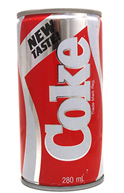How do executives learn? Executive software summit – Oct. 16-18
When Steve McConnell asks you to speak somewhere, it’s hard to say no. I’ve been invited to round out the stellar speaking ticket of Joel Spolsky, Watts Humprhey, Steve McConnell and Ed Yordon at Construx software‘s annual executive software summit in Seattle, October 16-18.
Paraphrasing from their website:
The Construx Software-Executive Summit is a forum for top software executives to share, analyze, evaluate, and improve their experiences at the enterprise level. Participants develop new insights into their own organizations and explore challenges and opportunities with a select group of peers. Last year’s event was a huge success: 100% of attendies would return again.
At the 2005 Summit, 98% of participants held titles of VP, CTO, Director, or higher. The main criteria for attendence is multi-project responsibility for software development.
It’s an exclusive event – I don’t qualify myself – and there are only 60 seats for the whole thing. It’s a rare opportunity for executive level managers to experience a peer focused conference. The $3k fee includes a voucher for $1195 in free training from Construx for anyone in your org – so check out the agenda and registration info.







 There was a report today of
There was a report today of  Today is
Today is